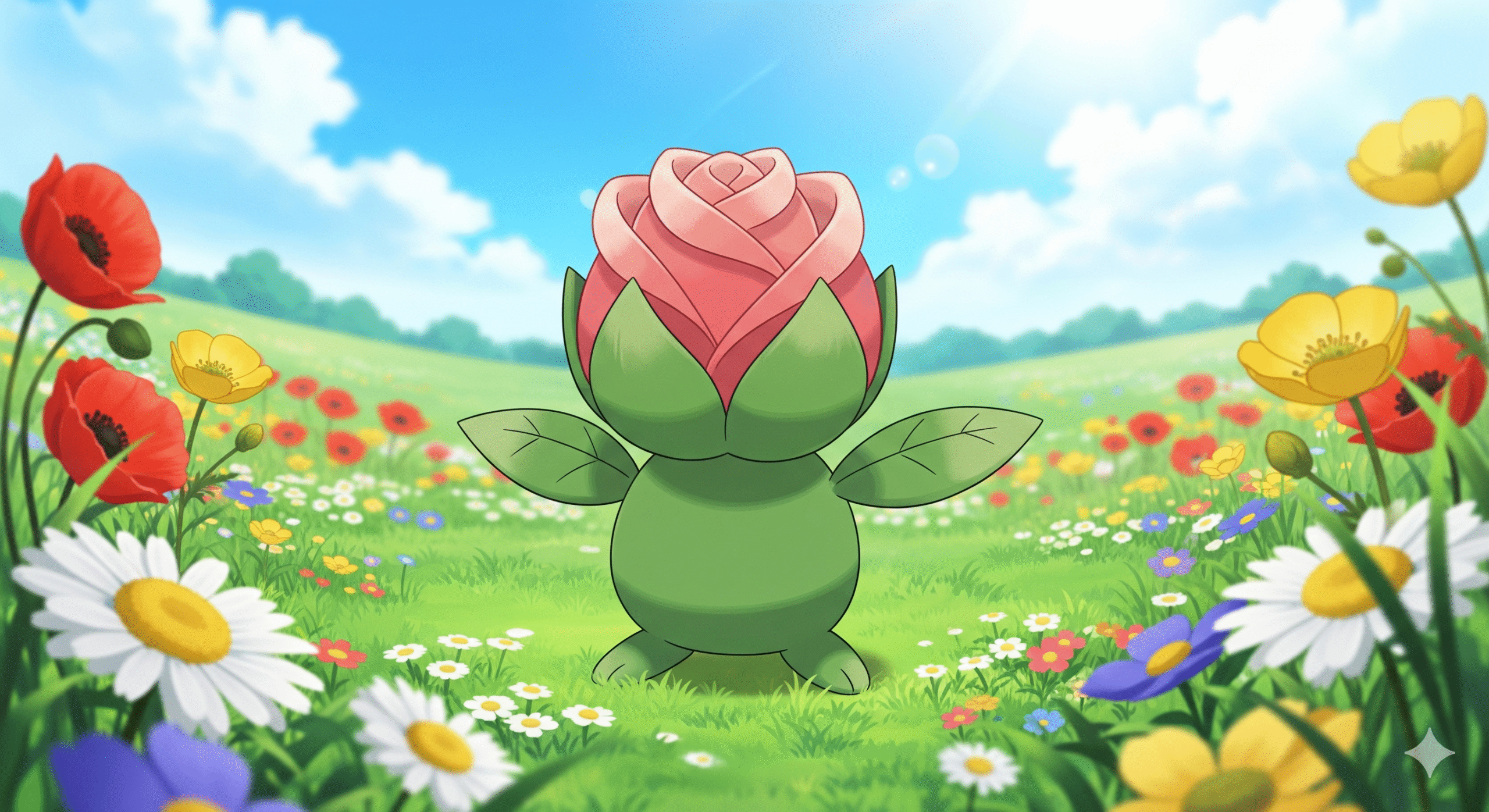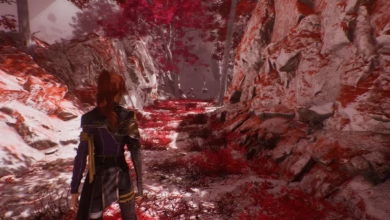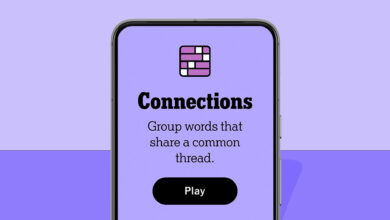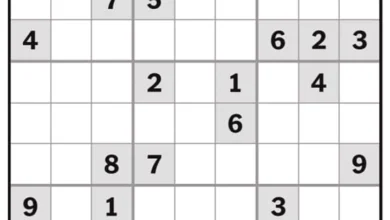Rosebud Pokemon: Everything You Need to Know About the Budding Flower Pokémon?

The Pokémon universe is filled with creatures inspired by animals, plants, myths, and everyday life. Among them, flower-based Pokémon have always held a special place in the hearts of fans. One term that has gained attention recently is “Rosebud Pokemon.” While not officially the name of any Pokémon species, this phrase has become widely associated with Budew and its evolutionary line: Roselia and Roserade. Because Budew resembles a small rosebud, fans often refer to it as the Rosebud Pokemon.
In this comprehensive guide, we’ll explore what the Rosebud Pokemon really means, its origins, the Budew evolutionary line, Pokédex lore, in-game mechanics, appearances in Pokémon GO and the main series games, and why fans continue to be fascinated by this tiny budding flower.
What Is the Rosebud Pokemon?
The term “Rosebud Pokemon” does not officially appear in Pokémon games or anime. Instead, it’s a fan nickname that grew popular due to Budew’s appearance as a closed rosebud. Budew is a Grass/Poison-type Pokémon first introduced in Generation IV (Pokémon Diamond and Pearl). It is considered the pre-evolution of Roselia, which later evolves into Roserade.
Because of its bud-like design and floral theme, many players casually call Budew the “Rosebud Pokemon.” Some online sources even treat “Rosebud Pokemon” as if it were a separate species, but in reality, it is simply another way of describing Budew.
Origins of the Rosebud Pokemon Term
The popularity of the phrase “Rosebud Pokemon” surged in different contexts:
- Fan Communities – Pokémon fans on forums and social media began calling Budew a rosebud due to its small closed-flower design.
- Pokémon Lore – The Pokédex states that Budew opens its bud in warm sunlight and closes it in cold weather, which aligns perfectly with the idea of a flower bud waiting to bloom.
- Pop Culture Influence – A New York Times Connections puzzle in late 2024 used the word ROSEBUD in a word association game, which led to online chatter about the “Rosebud Pokemon.”
- Misinformation Sites – Some websites misinterpreted “Rosebud Pokemon” as a hidden or rare Pokémon, further fueling curiosity.
Despite the confusion, the community largely accepts that Budew is the Rosebud Pokemon.
Meet Budew: The True Rosebud Pokemon
Budew is a baby Pokémon introduced in the Sinnoh region. Let’s take a closer look at its characteristics.
General Information
- Pokédex Number: #406
- Type: Grass/Poison
- Category: Bud Pokémon (fan-dubbed Rosebud Pokemon)
- Height: 0.2 m (8 inches)
- Weight: 1.2 kg (2.6 lbs)
- Abilities: Natural Cure or Poison Point (Hidden Ability: Leaf Guard)
Pokédex Lore
Different Pokédex entries describe Budew as a plant Pokémon sensitive to the seasons:
- In the warmth of the sun, Budew opens its bud and releases toxic pollen.
- In cold weather, it closes its bud tightly to protect itself.
- Its bloom is often associated with the arrival of spring.
These descriptions highlight why Budew embodies the concept of a rosebud waiting to blossom, reinforcing the fan-made nickname.
Evolutionary Line: From Rosebud to Roserade
The Budew line is beloved for its beauty and battle potential. Here’s how the evolution works:
- Budew (Rosebud Pokemon)
- Evolves into Roselia when it has high friendship and levels up during the daytime.
- Roselia
- A graceful Grass/Poison Pokémon resembling a blooming rose.
- Evolves into Roserade when exposed to a Shiny Stone.
- Roserade
- Known as the Bouquet Pokémon.
- Resembles a masked dancer with bouquets of flowers for hands.
- Wields powerful moves like Toxic Spikes and Leaf Storm.
This evolutionary line perfectly symbolizes growth: from a closed bud (Budew) to a blooming flower (Roselia) and finally to a decorative bouquet (Roserade).
Rosebud Pokemon in the Games
In the Main Series Games
- Pokémon Diamond, Pearl, and Platinum: Budew is found near clean water in the early routes. It becomes a valuable Grass-type partner against Rock-type gyms.
- Pokémon Sword and Shield: Available in the Wild Area and Isle of Armor expansion.
- Pokémon Brilliant Diamond and Shining Pearl: A strong presence as part of the Sinnoh Pokédex, staying true to its Gen IV origins.
Budew is often chosen by trainers who want a Grass/Poison partner with strong evolutionary potential.
In Pokémon GO
In Pokémon GO, Budew is categorized as a baby Pokémon. It:
- Can be hatched from 5km or 7km Eggs.
- Evolves into Roselia with 25 Roselia Candies.
- Roselia then evolves into Roserade using 100 Roselia Candies plus a Sinnoh Stone.
Because Budew is rarer in the wild, hatching eggs remains the primary way to obtain this Rosebud Pokemon.
Battle Strengths and Weaknesses
Like other Grass/Poison Pokémon, Budew and its evolutions have unique advantages and disadvantages.
Strengths:
- Strong against Water, Ground, and Fairy types.
- Access to useful status moves like Stun Spore and Toxic.
- Roserade, in particular, is a powerful special attacker in competitive battles.
Weaknesses:
- Vulnerable to Fire, Flying, Ice, and Psychic moves.
- Budew itself is frail and better used early-game or as a stepping stone to Roselia.
Rosebud Pokemon in the Anime
Budew has appeared in the Pokémon anime, notably in episodes featuring Roselia or Roserade. It is often shown as a gentle and cheerful Pokémon, reflecting the innocence of a flower bud. Trainers in the anime have raised Budew into Roselia, showcasing the natural beauty of this evolutionary line.
Why Fans Love the Rosebud Pokemon
- Design Appeal – Budew’s cute design as a tiny flower bud resonates with fans who enjoy plant-themed Pokémon.
- Symbolism – The evolution from bud to flower represents growth, friendship, and transformation.
- Accessibility – Budew is easy to catch in early routes, making it a nostalgic companion for many trainers.
- Competitive Utility – While Budew itself is weak, Roserade is a fan-favorite in competitive play.
- Aesthetic Line – The Roselia family is among the most elegant Grass-type designs, appealing to collectors and casual players alike.
The Misinformation Around “Rosebud Pokemon”
Because “Rosebud Pokemon” is not an official term, several misconceptions have spread:
- Some believe it’s a secret unreleased Pokémon in the series.
- Others confuse it with event Pokémon in Pokémon GO.
- A few GPS-spoofing and third-party gaming blogs use “Rosebud Pokemon” as clickbait for guides that don’t exist.
To clarify: there is no standalone Pokémon named Rosebud. The correct Pokémon is Budew, which has simply been nicknamed the Rosebud Pokemon by fans.
Rosebud Pokemon and Symbolism in Pokémon Lore
Flower Pokémon often symbolize renewal, beauty, and the power of nature. Budew, as a closed flower bud, is particularly symbolic:
- It represents potential waiting to bloom.
- Its poison pollen reminds players that beauty can hide danger.
- Its evolution line mirrors the life cycle of a rose — from bud to bloom to bouquet.
This symbolism explains why fans have embraced the Rosebud Pokemon as more than just a name—it carries meaning.
Future of Rosebud Pokemon
While no official announcements have introduced new “Rosebud” creatures, the Pokémon franchise often revisits plant-themed designs. It’s possible that:
- Future games may expand on floral Pokémon lines.
- Budew could appear in regional variants or special forms.
- Pokémon GO events may highlight Budew, Roselia, and Roserade under the theme of “rosebud.”
Conclusion
The term “Rosebud Pokemon” may not be an official entry in the Pokédex, but it has become an affectionate nickname for Budew, the small Grass/Poison Pokémon introduced in Generation IV. With its rosebud-like design, charming symbolism, and strong evolutionary line, Budew has earned a special place in the Pokémon world.
From its origins as a misunderstood fan term to its recognition as a symbol of growth and beauty, the Rosebud Pokemon continues to capture the imagination of players and collectors. Whether you encounter it in Pokémon GO, train it in Diamond and Pearl, or simply admire its design, Budew will always be remembered as the true Rosebud Pokemon



